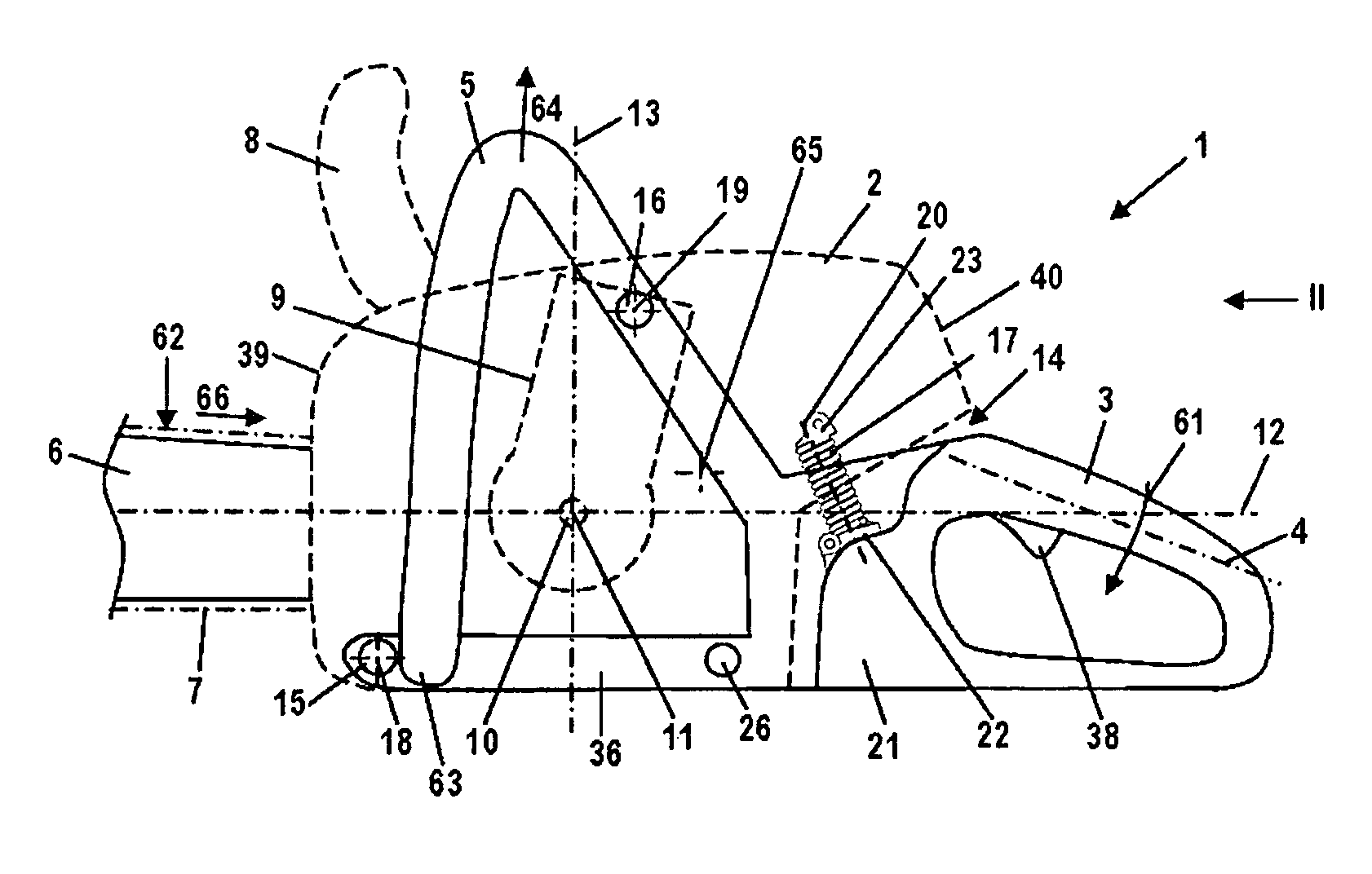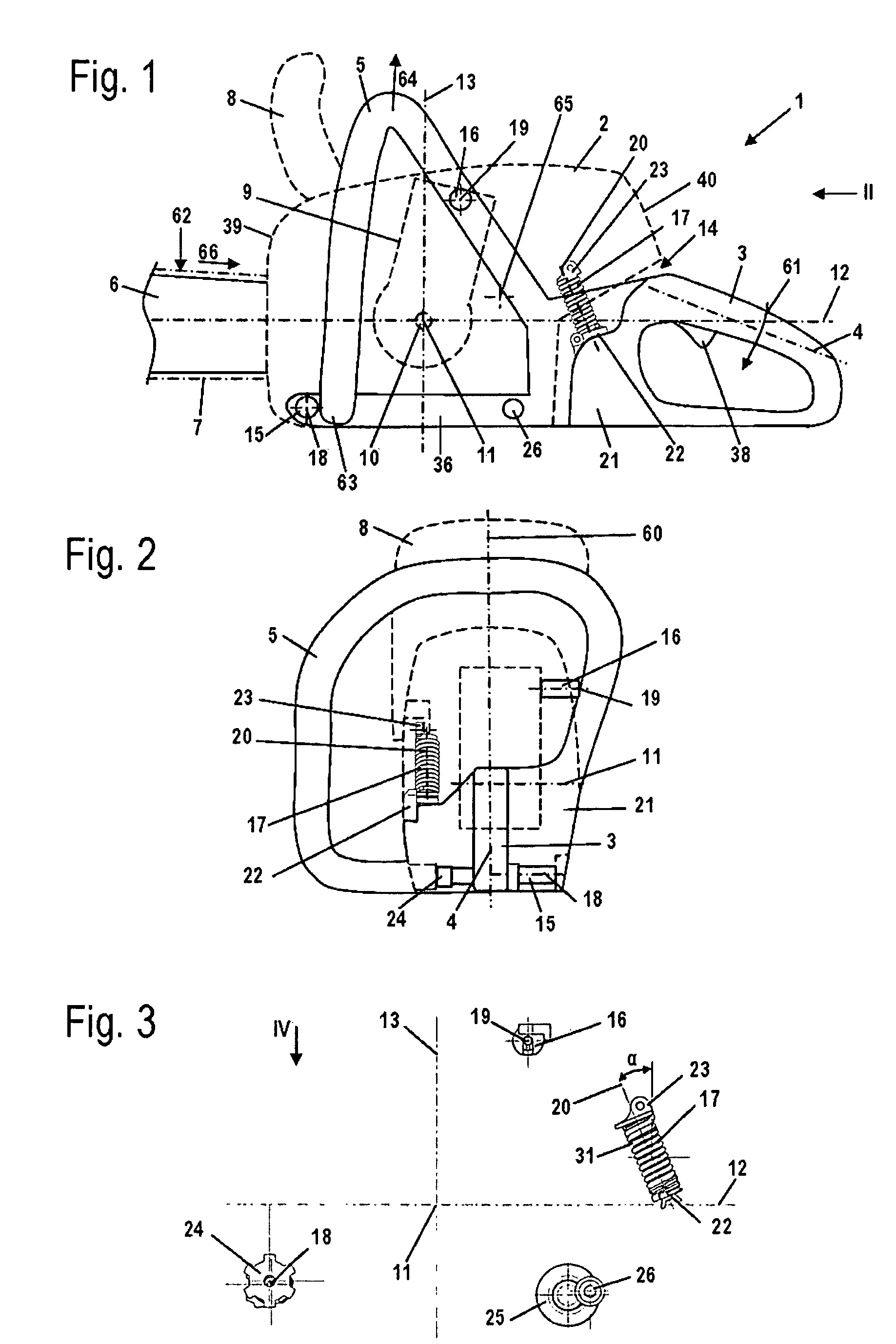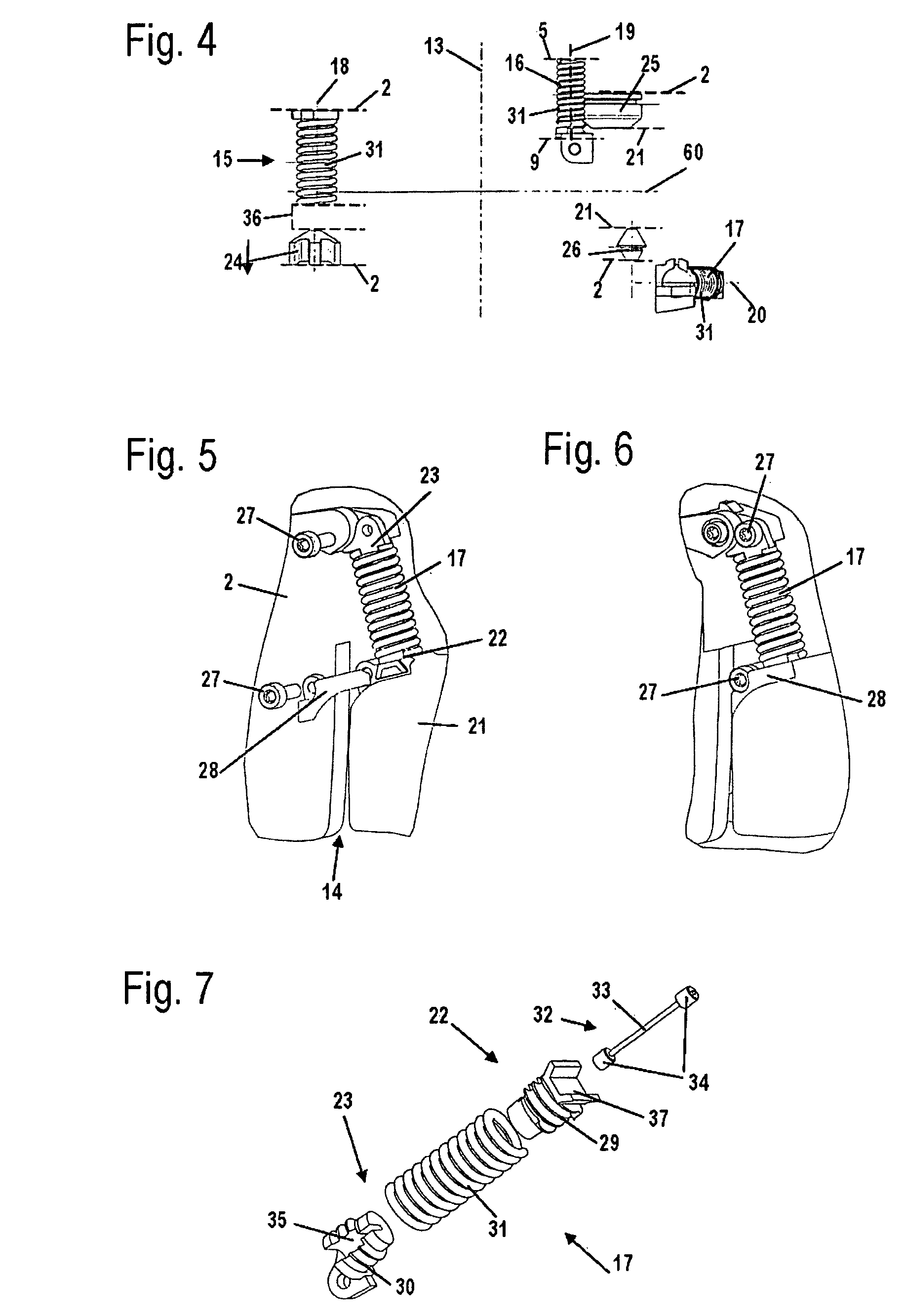Manually guided implement
a technology of manual guide and implement, which is applied in the direction of chain saws, metal sawing accessories, manufacturing tools, etc., can solve the problems of easy limitation of the relative movement of the drive motor and the handle transverse to the longitudinal axis of the horizontally disposed anti-vibration element, and good vibration dampening of the entire system
- Summary
- Abstract
- Description
- Claims
- Application Information
AI Technical Summary
Benefits of technology
Problems solved by technology
Method used
Image
Examples
Embodiment Construction
[0030]Referring now to the drawings in detail, as an exemplary embodiment for a manually-guided implement, FIG. 1 shows a power saw 1. However, the present invention can also be used with other manually-guided, and in particular portable, implements, such as cut-off machines or the like. The power saw 1 has a housing 2 in which is disposed a drive motor 9, which is in particular embodied as an internal combustion engine, and is advantageously a single cylinder engine. The drive motor 9 is in particular a two-cycle engine or a mixture-lubricated four-cycle engine. The drive motor 9 has a drive shaft 10 that, when the drive motor 9 is embodied as an internal combustion engine, is the crankshaft, and is rotatably driven about an axis of rotation 11. The drive shaft 10 rotatably drives a non-illustrated pinion. The power saw 1 has a guide bar 6 on which a saw chain 7 circulates. The saw chain 7 is driven in a circulating manner by the drive shaft 10 via the non-illustrated pinion. The g...
PUM
| Property | Measurement | Unit |
|---|---|---|
| angle | aaaaa | aaaaa |
| angle | aaaaa | aaaaa |
| angle | aaaaa | aaaaa |
Abstract
Description
Claims
Application Information
 Login to View More
Login to View More - R&D
- Intellectual Property
- Life Sciences
- Materials
- Tech Scout
- Unparalleled Data Quality
- Higher Quality Content
- 60% Fewer Hallucinations
Browse by: Latest US Patents, China's latest patents, Technical Efficacy Thesaurus, Application Domain, Technology Topic, Popular Technical Reports.
© 2025 PatSnap. All rights reserved.Legal|Privacy policy|Modern Slavery Act Transparency Statement|Sitemap|About US| Contact US: help@patsnap.com



